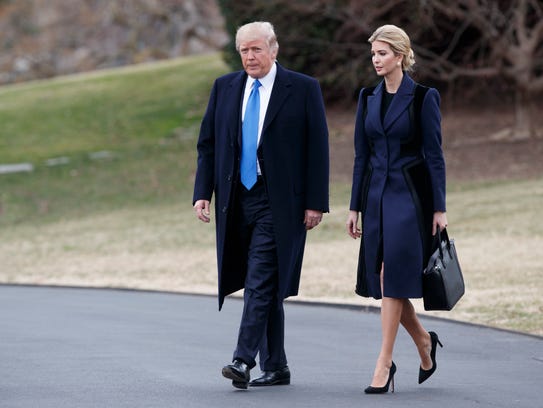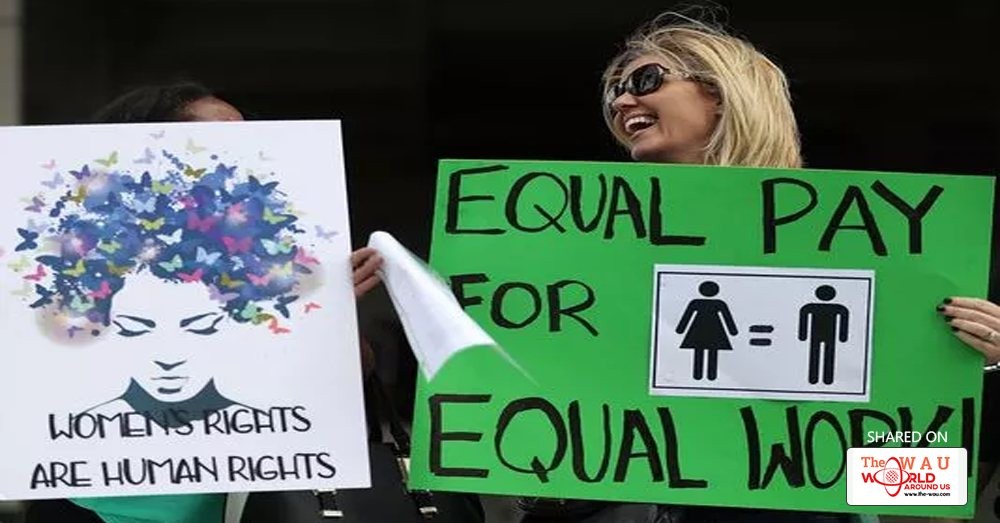Business groups led by the U.S. Chamber of Commerce are pressuring the Trump administration to kill an Obama-era initiative designed to reduce wage disparities by requiring big employers to report pay data based on race, gender and ethnicity.
The Obama administration had proposed the new requirement to bolster federal investigations of possible pay discrimination and encourage employers to evaluate their own pay practices as women’s salaries continue to lag behind those of men.
But an ad-hoc coalition of business associations asked President Trump’s budget office to review and reject the Equal Employment Opportunity Commission’s requirement, saying the data collection is too onerous and expensive.
“If ever there was a regulation that imposed an incredible amount of burden with no utility ... it’s this one,” said Randy Johnson, a senior vice president with the Chamber. “It was pushed through under the prior administration because it met a political goal. But as far as the substance and merits, there just isn’t any that would justify it being kept on the books.”
Johnson said the Office of Management and Budget hasn’t responded to a March 20 letter the Chamber sent with 26 other business associations to the director, Mick Mulvaney, requesting the review. But he said the issue is among the Chamber’s top labor priorities.
“I think the agency will take care of this,” he said. “It’s such a gross abuse of regulatory power on the part of the EEOC.”
Trump’s stance on pay equity has been somewhat murky.
He has said he supports pay based on performance, but he expressed concerns in 2015 about equal pay legislation if “everybody ends up making the same pay,” likening such a result to “a socialist society.” His daughter Ivanka, however, pledged during the campaign that her father would fight for “equal pay for equal work” and has said she, herself, is “very passionate" about fighting for wage equality.
“Ivanka Trump during the campaign said her father was going to be a champion for equal pay,” said Emily Martin, with the National Women’s Law Center. “So here’s a real choice to be made — whether you’re going to go forward with this important initiative to close the wage gap or whether you’re going to stop this progress in its tracks.”

Lisa Maatz, with the American Association of University Women, said, “We would like to see this be a place where they take a stand. All you have to do is look at the Women’s March to know that people care about these issues, they’re watching and we’re not going away”
The White House and EEOC did not respond to requests for comment, and in a statement, the Office of Management and Budget said only, “OMB is reviewing the request.”
Women working full time in the U.S. were typically paid 80% of what men were paid in 2015, and the pay gap was worse for women of color, according to a 2017 AAUW study. Part of the reason may be a concentration of women in lower paying jobs or women working fewer hours, but experts also point to discrimination and bias as contributing factors.
Democratic National Committee Chairman Tom Perez said the initiative to collect pay data was one of the most important things he worked on to address the pay equity gap for women when he served as President Obama’s Labor secretary.
“I don’t understand why any company who wants to retain their workforce and recruit the best and brightest talent wouldn’t want to keep this data so that they understand, ‘Do we have a problem?”“This is not rocket science. This is about fundamental fairness.”
Employers have long reported data about numbers of employees by job category, gender and ethnicity or race. The new annual requirement, announced in September, calls for private employers and federal contractors with more than 100 employees to also report the pay data by March 31, 2018. The Obama administration estimated it would cover 63 million employees.
As of December, more than one hundred companies and organizations, including AT&T, eBay, Mastercard and Yahoo, had signed Obama’s “White House Equal Pay Pledge,” voluntarily committing to conducting annual company-wide gender pay analyses across occupations.
After a public comment period, the EEOC gave employers additional time to comply, allowing them to reduce costs by using W-2 wage data.
But the Chamber and other groups argued in their letter to that OMB that the new survey forces companies to take on “huge additional costs” for “no accompanying benefit, or protections for the confidentiality of the information.”
“We’ve heard from companies that are saying, ‘Look, this is ridiculous, get this off the books,’” Johnson said.
Legislation including a provision to codify the data-collection requirement will be reintroduced on Tuesday — a day that is called “Equal Pay Day” to raise awareness on the gender pay gap. The Paycheck Fairness Act aims to strengthen an aggrieved worker’s position in court, prohibit retaliation against workers and improve federal enforcement of anti-discrimination laws. It passed the House twice in prior Congresses under Democratic control, but it is unlikely to moving in this Congress.
Rep. Rosa DeLauro, D-Conn., who has introduced the bill every Congress since 1997, said the Chamber’s attempts to repeal the data-collection requirement are “shameful.”
“We should enact the Paycheck Fairness Act to ensure that the EEOC will collect this critical data, rather than leaving it as a political bargaining point between the Chamber of Commerce and the Administration,” she said in a statement.
Share This Post














